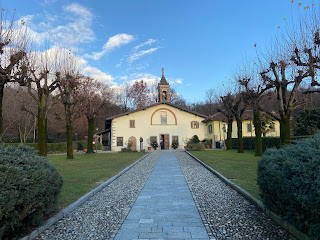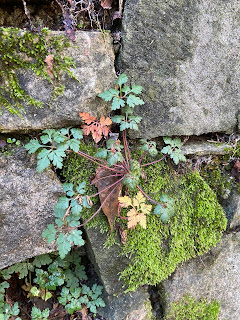Background | 1944 | Memorials | Photos


Right: A sign explaining what happened on September 26th, 1944.
Background
As we wind down a challenging year for the world and democracy in the USA, it takes stories from the past to shake us out of our daze and remind us of what we have in front of us and to not take it for granted. One of those stories for us is one we learned about recently on a hike around Bergamo. The story unfolded on September 26th, 1944 in the hills just behind Bergamo's upper city. On that day, nine young Italians were killed. Five were killed in a gun fight in the hills and four were executed in the nearby hamlet of Petosino. This monument we visited is a tribute to them.
The name Monumento ai caduti partigiani translates at the Monument to the Partisans. A partisan is "a member of an irregular military force formed to oppose control of an area by a foreign power or by an army of occupation by some kind of insurgent activity." In this case, the partigiani honored by the monument were fighting against the occupation of Italy by Germany between September 1943 and April 1945. The partigiani originated in the 1920s, but for our story here, we are in the middle of World War II, about a year after Italy changed sides and joined the Allies.
The partigiani were an important part of the Italian resistance movement, which was a mosaic of various groups with different goals, but more or less aligned to kick out the Germans. And they succeeded with the help of Allied forces. The nine partisans in this story belonged to a group called the Brigate Fiamme Verdi (Green Flame Brigade) of predominantly Roman Catholic orientation. Other groups in the resistance include anarchists, communists, and socialists.
1944
In the early morning hours of a September 26th, 1944, partisans of the Green Flame Brigade (including the nine later killed) raided a German supply point in Curno with the hopes of stealing much needed arms, ammunition, and other equipment. The raid didn't go as planned. The partisans expected that there would be a get-away vehicle they could also steal to help them escape with the loot, but unfortunately, there wasn't. So, the group of partisans beat a retreat on foot to the hills, dragging the loot with them.
The hills they escaped to are the ones northwest of Bergamo's upper city in the area where the monument is located. Specifically, the partisans ended up on the crest of the hill behind Madonna della Castagna. For an example of walk with this church as your destination, see the post A Walk from Bergamo to Madonna della Castagna.
So the partisans are on the ridge of the forested hill and realize that they are surrounded by German forces. Some of the partisans with papers in order are told to escape. Four of those were later captured and executed. The 15 or so remaining on the hill fought the Germans. Five died in battle and the rest escaped. As suggested by the monument's information panel, the bodies of killed partisans (in battle and executed) were left out in the street for a day as a warning to others about joining the resistance. Only the day after, would anyone dare come to collect the bodies and take them for burial.
Memorials
We used to wonder about the number of war memorials in Italy, from big ones like the Parco delle Rimembranze (La Rocca), to a moderate-sized monument like this monument hidden in the hills, to a small plaques we have seen countless times hiking. Whatever the size, they seemed to us like heavy reminders to have around.
A recent book helped us to understand the memorials a little bit better. The book is "On Tyranny: Twenty Lessons from the Twentieth Century" by Timothy Snyder, where the author describes two antihistorical ways of viewing history, the politics of inevitability and the politics of eternity. In short, the politics of inevitability is "the sense that history could move in only one direction: toward liberal democracy." And the politics of eternity "is a longing for past moments that never really happened during epochs that were, in fact, disastrous." We realized that we were very guilty of the politics of inevitability. With the step backwards in the last four years in the US and elsewhere in the world, we struggled to understand what was happening. Because we subscribed to the politics of inevitability we couldn't understand the regression in liberal democracy. We learn from our past mistakes and we don't repeat them, right? Societies move to more inclusion not less, right? If so, why is this happening.
So on this sunny and peaceful Sunday morning, standing in front of this monument, it dawned on us why these monuments exist. They are here to remind us of the past so that we don't make the mistake of the politics of inevitability. Just because something horrible happened in the past doesn't necessarily mean it won't happen again. As Mark Twain said: "History doesn't repeat itself, but it often rhymes." To this point, see the NOEMA article "Welcome to the Turbulent Twenties".
Photos



Views of the Monumento ai Caduti Partigiani.


The three arches of the Monumento ai Caduti Partigiani on a hill above Petosino, near Bergamo.


Left and center: Information about the men killed and their route that led them to the hills.
Right: Signage in hills behind Bergamo indicating how to find the monument.

Traccia Partigiana or "trail of the partisans" sign lists the partisans.


Left: One approach to the Monument ai Caduti Partigiani is from the Greenway del Morla bike trail with views toward Monte Linzone and Resegone.
Right: Walking back to the Bergamo, you can pass along the fascinating Via del Rione and pass by the Case Moroni.













